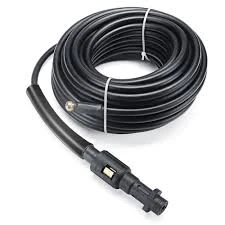Lexus ES300 Power Steering Hose Replacement Step-by-Step Guide for Easy DIY Repair
Power Steering Hose Replacement for Lexus ES300
The Lexus ES300, known for its luxurious ride and engineering excellence, is a prominent choice for those seeking comfort and reliability in their vehicles. However, like any car, the ES300 may face wear and tear over time, particularly with components such as the power steering system. If your car exhibits signs of steering trouble—such as difficulty turning the wheel or noticeable leaks under the vehicle—it may be time to replace the power steering hose. This article will guide you through the process of power steering hose replacement for the Lexus ES300.
Understanding the Power Steering System
The power steering system is essential for smooth steering. It utilizes hydraulic fluid to assist in turning the wheels, making it easier for the driver to maneuver the vehicle. The power steering hose is a critical component that transports this hydraulic fluid from the pump to the steering gear. Over time, hoses can degrade due to heat, pressure, and exposure to various environmental factors, leading to leaks and impaired steering performance.
Symptoms of a Worn Power Steering Hose
Before you proceed with the replacement, it’s important to identify signs that indicate a failing power steering hose. Common symptoms include
1. Fluid Leaks Puddles or stains of power steering fluid under your vehicle are strong indicators that a hose may be compromised. 2. Difficulty Steering If you notice increased resistance when turning the steering wheel, it could be due to low fluid levels caused by a leak. 3. Unusual Noises A whining or groaning sound while steering can suggest that the power steering fluid is low, potentially due to a damaged hose.
Tools and Materials Needed
To replace the power steering hose on your Lexus ES300, gather the following tools and materials
- New power steering hose (specific to Lexus ES300) - Power steering fluid - Socket set - Wrench set - Pliers - Fluid catch basin - Shop towels
Step-by-Step Replacement Process
lexus es300 power steering hose replacement

1. Preparation Park your vehicle on a level surface and engage the parking brake. Turn off the engine and let it cool down if it has been running.
2. Access the Hose Open the hood and locate the power steering pump. The hose usually runs from the pump to the steering gear.
3. Drain the Fluid To prevent spillage, place a fluid catch basin under the power steering pump. Loosen the cap and allow the fluid to drain partially.
4. Disconnect the Old Hose Using the appropriate size wrench or socket, carefully remove the nuts or clamps securing the old hose to the pump and the steering gear. Be cautious of any residual fluid.
5. Remove and Replace Once detached, compare the old hose with the new one to ensure they match. Install the new hose by securing it to the pump and the steering gear, tightening the nuts or clamps carefully.
6. Refill the System After the new hose is in place, refill the power steering fluid reservoir with the recommended fluid specified in your owner’s manual.
7. Bleed the System Start the engine and turn the steering wheel from lock to lock several times to remove air bubbles from the system. Check for leaks around the new hose.
8. Final Check After confirming there are no leaks, close the hood and take the vehicle for a short test drive. Pay attention to the steering response and any unusual noises.
Conclusion
Replacing the power steering hose in your Lexus ES300 can significantly improve your vehicle's handling and performance. By addressing this component when signs of wear are present, you can prevent more severe issues down the line. If you're not comfortable performing the replacement yourself, consider seeking assistance from a qualified mechanic. Maintaining your power steering system will ensure your Lexus ES300 remains a smooth and enjoyable ride for years to come.
-
Ultimate Spiral Protection for Hoses & CablesNewsJun.26,2025
-
The Ultimate Quick-Connect Solutions for Every NeedNewsJun.26,2025
-
SAE J1401 Brake Hose: Reliable Choice for Safe BrakingNewsJun.26,2025
-
Reliable J2064 A/C Hoses for Real-World Cooling NeedsNewsJun.26,2025
-
Heavy-Duty Sewer Jetting Hoses Built to LastNewsJun.26,2025
-
Fix Power Steering Tube Leaks Fast – Durable & Affordable SolutionNewsJun.26,2025

